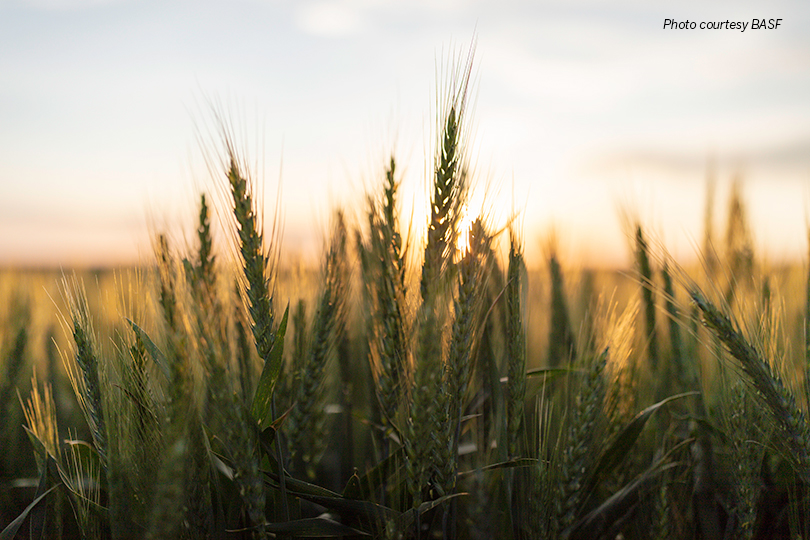By Jennifer Whitlock
Field Editor
A new fungicide introduced by BASF can help farmers control fusarium head blight (FHB) in wheat and reduce impacts of deoxynivalenol (DON) better than other wheat fungicides on the market, according to a company press release.
Fusarium is a genus of fungi that affects a wide range of plants and soils. Farmers are most familiar with fusarium ear rot in corn, but the fungus also affects wheat, barley, rye, triticale and forage grasses.
FHB, also called head scab, results in shrunken kernels and a loss in both grain yield and quality in wheat. It may also cause DON, which is a dangerous mycotoxin.
“DON reduces the value of your wheat crop by negatively impacting grain quality,” Ken Deibert, technical field representative for BASF Agricultural Solutions, said. “And with head scab treated acres up 45% since 2013, it’s not if you’ll come in contact with it, but when.”
The fungicide, Sphaerex, combines two well-known active ingredients, metconazole and prothioconazole, to defeat FHB. It was recently registered by the U.S. Environmental Protection Agency and will be available for the 2022 growing season.
Dangers of DON
DON, or vomitoxin, affects both animal and human health, according to the U.S. National Institutes of Health. In humans, the toxin may cause nausea, vomiting, diarrhea, abdominal pain, headache, dizziness and fever.
Pigs are more sensitive to DON than other animals, but a wide range of species, including dogs and cats, have been shown to exhibit vomiting and feed refusal after exposure.
FHB in wheat
Although Texas wheat is not typically as susceptible to FHB as that in other states, the disease will frequently appear when conditions are right.
Favorable conditions for FHB are temperatures between 75-85°F and light to moderate rainfall during the pollination period, according to Texas A&M AgriLife Extension Agents Tyler Mays and Zach Davis, who spotted FHB in Blacklands wheat crops last year.
Wheat is susceptible to FHB from flowering to kernel development, Feekes Stage 9 to 10.5.1. If too much FHB develops, the resulting grain’s marketability is severely reduced and may even lead to rejection at the grain elevator.
The combination of active ingredients in Sphaerex should offer a broader spectrum of protection and preserve yield potentials and quality, BASF said.
To learn more about Sphaerex, contact a local BASF representative or visit Super-Sphaerex.com.

